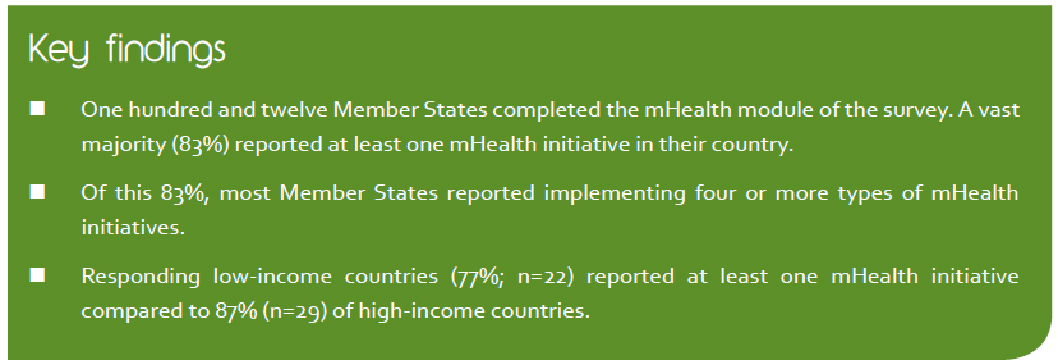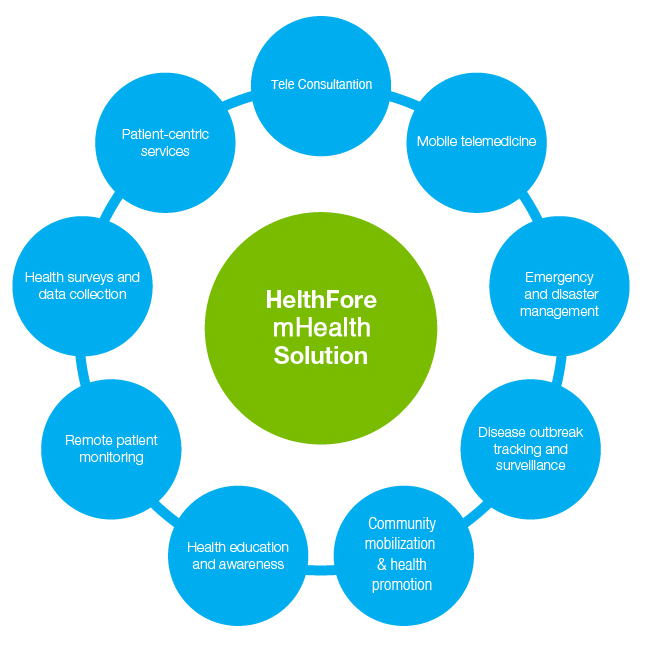Mobile penetration has taken over the world with 5 billion mobile subscriptions for the population of 6 Billions. Till now, these devices are used as telecommunication media and seen as an alternative to telephone or max to max to do an e-commerce [Where you can buy your favorite item or another phone ? ] transaction.
Do we by any chances know that mobile devices are going to be our life savers in the future or something that would make us live Hale & Hearty or we can even go to an extent to say that the life form may even start to perish without these? The days are not too far away and lets see how these devices slowly become inevitable for life. As we started, the unprecedented spread of mobile technologies as well as advancements in their innovative application to address the health priorities has evolved in into m-Health [a subset of eHealth]. According to the international telecommunication union there are close to 5 billion mobile phone subscriptions in the world and over 85% have access to commercial wireless signal. This makes the governments to expand their interest in m-Health as a complimentary strategy for strengthening their overall healthcare service system.

m-Health simply uses the voice, SMS, GPRS with 3/4G systems bundled with GPS and Bluetooth.
So what is the role of m-Health system? Where exactly it helps the healthcare?
There are a variety of ways in which m-Health can potentially be used to provide health care service and some of them are listed below.
1.Patient compliance: There is potential to improve adherence by direct reminders to patients via voice calling or SMS. For diseases with highly complex treatment systems such as HIV/AIDS and TB, having a point-of-contact with a key provider enables the patient with increased autonomy and reliability.

2.Information broadcast: Information may be distributed through text message services, voice calling, or e-mail as a method of delivering care.
3.Telemedicine: By creating a mobile as a medium for exchanging health information at a distance, telemedicine has been able to help circumvent some issues of acute labor shortages in developing countries.
4.Emergency support:The application of mobile technology in health care builds on existing supply chains in telecommunication systems, which brings access to remote areas that may lack physical infrastructure and health care providers and promotes the propagation of health information in case of emergency.
5.Tele monitoring : A technology where the patient uses wearable healthcare gadgets like smart watches, bands, health patches, smart garments, etc and gets to be monitored by the medical practioners remotely. This technology is evolving drastically and also extends as a Healthcare IoT [Internet of Things].
A technology where the patient uses wearable healthcare gadgets like smart watches, bands, health patches, smart garments, etc and gets to be monitored by the medical practioners remotely. This technology is evolving drastically and also extends as a Healthcare IoT [Internet of Things].
About the Author
Om has around 25+ years of rich experience IT Delivery management and has worked with fortune 500 customers across the globe, involving in engagements with variety of business models. He has extensively worked in the Retail/Logistics and Manufacturing domains and executed multiple engagements in Supply chain, POS, General Merchandise, Material Management, PPM, Warehousing, Sales/Distribution, Shipping, ERP and CRMs.